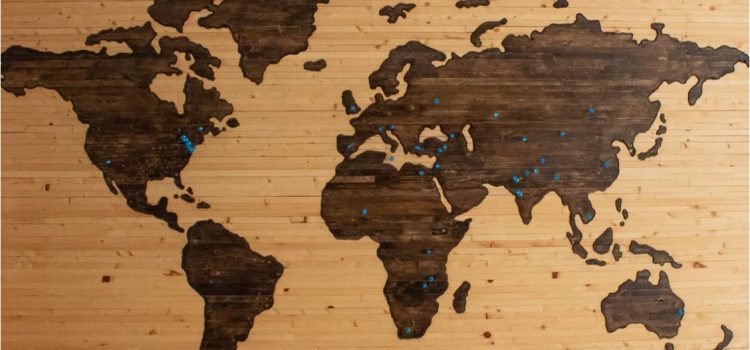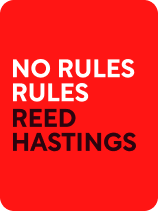

This article is an excerpt from the Shortform book guide to "No Rules Rules" by Reed Hastings. Shortform has the world's best summaries and analyses of books you should be reading.
Like this article? Sign up for a free trial here .
Does your company employ people from a diverse range of backgrounds? How can you adapt your policies to accommodate for cultural diversity in the workplace? What can you learn from how Netflix handled this hurdle?
In their book No Rules Rules, Netflix CEO Reed Hastings and author Erin Meyer discuss the challenges Netflix faced when it started to grow internationally. He learned two major lessons about working with people from different cultures and now Netflix successfully operates in over 190 countries.
Here’s how Netflix CEO Reed Hastings adapted for diversity.
Accommodate Cultural Differences
By 2011, Netflix had cultivated a culture of autonomy and accountability that was enabling the company to produce great results in the U.S. Hastings began expanding the company into other countries—first in Canada, then Latin America, Europe, and Pacific Asia. By 2016, Netflix was in more than 130 countries worldwide.
(Shortform note: Netflix is now in 190 countries, setting the stage for the company’s next phase and a new form of disruption: producing non-U.S. content. This strategy seems to be paying off. Netflix has a roster of international hits, including the wildly popular Spanish show Money Heist and the record-breaking South Korean drama Squid Game.)
Still, Hastings knew from his past international travels that certain experiences and practices can’t be translated directly into other cultures. He considered whether the corporate culture he’d worked so hard to develop would work outside the U.S., or whether it would cause confusion and misunderstanding due to cultural diversity in the workplace.
He made a plan to make the international expansion as smooth as possible: He would find foreign job candidates who could adapt to the culture he had carefully cultivated at Netflix. The company would then train those new hires on the ins and outs of working within a culture of autonomy and accountability. Additionally, while Hastings acclimated international employees to the Netflix way, he would also remain open to adapting to and learning from their cultures.
| How to Preserve Your Company Culture Abroad Aside from Hastings’s give-and-take approach to cross-cultural adaptation, companies can preserve their core philosophies by adhering to Meyer’s principles when expanding operations to other countries: Determine the pressure points. Identify the specific aspects of the company culture and the country’s culture that are likely to cause conflict, such as decision-making processes (consensus or authoritarian?) and the approach to timelines (rigid or flexible?). Make sure everyone is heard. Use a common language and speak slowly and clearly during meetings, then summarize what was discussed. Give every cultural group the chance to contribute by asking international participants to give their input. Preserve creativity. It’s prudent to put formal systems in place when it comes to departments like finance and IT, but keep creative departments flexible. Have a diverse workforce in every office. Having homogeneous staff at each office might create chasms between international offices. For example, a Singapore office with mostly young creatives might have a hard time communicating with an office in Copenhagen with mostly middle-aged finance experts. Ensuring diversity helps all employees get used to working with other cultures on a day-to-day basis. |
Compare Culture Maps
Hastings wanted to remain vigilant about finding the areas in which Netflix’s corporate culture clashed or aligned with local cultures so that he could lead his American and foreign employees in being as effective as possible. Hastings found a tool for this task when he read The Culture Map by Erin Meyer, who co-authored this book. Meyer had created culture charts that used scales to measure norms for various behaviors, such as communication and decision-making. By comparing the charts of different cultures, Hastings could quickly and easily see how two cultures were similar as well as different, and that insight could help him develop ways to bridge those differences.
| Managing Cultural Diversity in the Workplace: Bridging Cultural Gaps Aside from her culture charts, Meyer has four important rules to guide you as you navigate cultural differences in international offices: Be patient. You may have to learn a whole new set of leadership skills that are more relevant in another setting. Similarly, even if you orient employees toward your company culture, it may take time for them to unlearn habits that aren’t aligned with the culture. Understand how all cultures within an office relate to each other. If you’re leading a multicultural team, go beyond learning how you should approach each team member and figure out how each one perceives other members. Look at the positives in every culture. It may be frustrating to work in a place where people are conflict-averse when you’re used to candid discussions and confrontation. Learn to appreciate how and why other cultures do things the way they do. Keep adapting. The more diverse your team, the more flexible you should be when it comes to understanding and accommodating differences. |
Adapt Candor Cross-Culturally
Hastings found that his employees from other cultures often struggled most with Netflix’s culture of candor. This was a cornerstone of Netflix’s culture, but each country’s attitude toward candor and providing feedback—especially to superiors—differed greatly.
Through their experiences in countries with indirect cultures, Netflix’s leaders learned important lessons for creating a comfortable middle ground in which employees from indirect cultures can still adhere to the company’s culture of candor.
(Shortform note: To better understand a culture’s approach to candor or other company practices and attitudes, consult an expert such as a local corporate anthropologist. This anthropologist can serve as a “culture translator,” helping you understand local norms and behaviors, as well as correcting any stereotypes that you might have about a culture. Another way to understand cultural nuances is to ask employees directly about their expectations and preferences.)
Lesson #1: Create More Opportunities for Formal Feedback
According to Hastings, Netflix leaders discovered that employees in indirect cultures struggled to give feedback on the spot—but if they were given guidelines and assigned to prepare feedback, they excelled as they would on any other task. Managers thus learned not to expect impromptu feedback among employees and instead tweaked their strategy, making feedback an agenda item for meetings, providing instructions and a clear structure for the feedback, and investing time and effort in relationship building to soften the sting of negative feedback.
(Shortform note: During these formal feedback sessions, you shouldn’t just be mindful about your delivery of negative feedback but also of the culture’s attitude toward positive feedback. While some cultures thrive on praise and positive reinforcement, others see praise from their managers as unwelcome. In Japan, for example, praised employees may feel embarrassed and worry that the praise might cause their co-workers to view them with mistrust. In these situations, it might be better to commend the team rather than singling out an individual.)
Lesson #2: Learn About Other Cultures and Adapt Your Feedback Style Accordingly
The way people interpret the tone of communication is relative. A message that may sound straightforward and perfectly acceptable in an American office could be considered rude and aggressive in a Singaporean workplace—and the same message could sound indirect and fluffy to a Dutch employee.
Netflix employees must understand the company’s emphasis on candor while also keeping in mind that their colleagues from other cultures may have different attitudes toward frankness. To prevent cultural differences from impeding progress and efficiency, Netflix employees across the globe must adapt to giving and receiving feedback that is more (or less) candid than they’re typically comfortable with. This might mean softening your negative feedback by refraining from placing blame and by framing the critique as a suggestion.
| How to Give and Receive Feedback in Other Cultures Meyer goes into more detail on general principles for cross-cultural feedback in The Culture Map: 1. Explain how you normally deliver feedback in your culture. 2. Don’t try to mimic the other culture, because you risk offending the other person. 3. If you’re used to receiving indirect negative feedback, learn to view direct feedback as a sign that the other person respects you enough to be honest with you. 4. If you’re used to giving indirect negative feedback and find yourself in a more direct culture, be explicit about both positive and negative comments, but make sure that you keep the amount of both types of feedback balanced over time. 5. If you’re used to giving direct feedback, one way to adjust to indirect cultures is by not mentioning the negative at all. Instead, praise only the positives—employees can infer what’s not being addressed directly. |

———End of Preview———
Like what you just read? Read the rest of the world's best book summary and analysis of Reed Hastings's "No Rules Rules" at Shortform .
Here's what you'll find in our full No Rules Rules summary :
- How Netflix achieved massive success in a short period of time
- The unusual business practices that have helped Netflix sustain its success
- Why Netflix fires adequate employees






